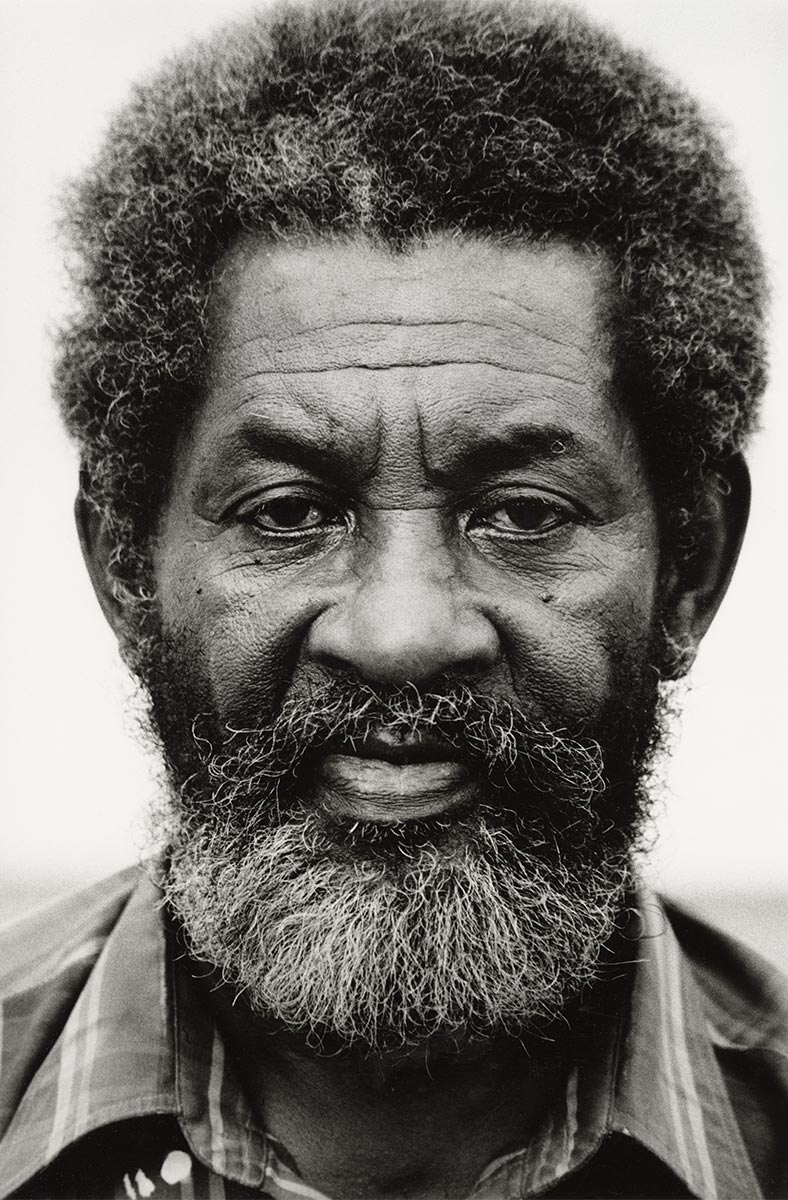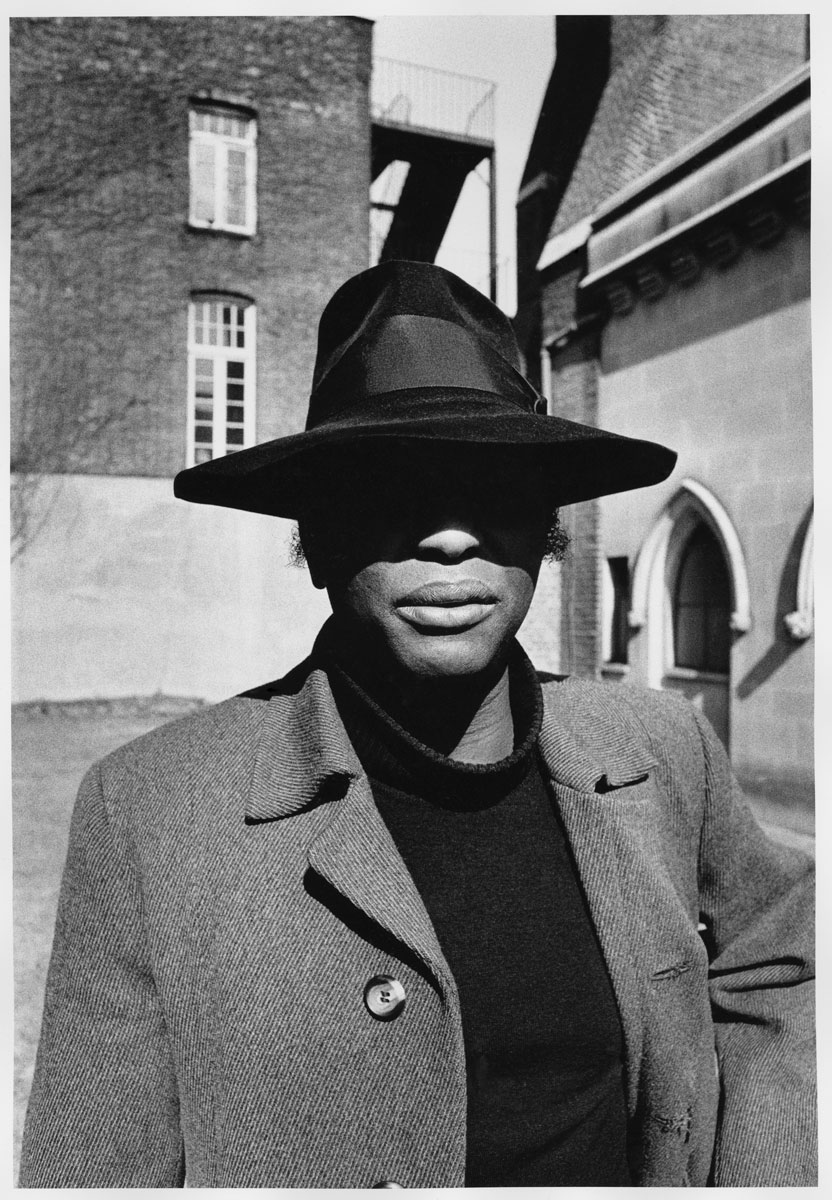For more than four decades, Armet Francis’ mission in photography has been to document the African diaspora. A Jamaican-British photographer with an acute understanding of black consciousness, his images are life-affirming moments that celebrate the resilience and survival of African diasporic cultures. Here we reflect on five moments captured by Francis, in images currently on display at Autograph’s gallery as part of the exhibition Beyond The Black Triangle.
This image was taken by Armet Francis at London’s Notting Hill Carnival in 1968. This annual carnival first took place in 1966 and continues to this day. Led by members of the British Caribbean community it is one of the world’s largest street festivals, showcasing and celebrating Caribbean music, culture and style.
This image depicts a sound system set up by some carnival attendees. A sound system typically consists of a group of DJs, engineers and MCs playing pre-recorded music. Sound systems became popular in the 1940s and 50s and were an important part of Jamaican culture. The phenomenon was brought to the UK with the mass immigration of Jamaicans in the 1960s and 1970s. It provided a cheaper way of featuring music at events than live musicians and an efficient means of musical distribution. As a result, the sound system has played a key role in the global influence of Jamaican music internationally and in many ways enabled the celebration and coming together of those with shared experiences from across the African diaspora.
This image, from 2nd March 1981, depicts the Black People’s Day of Action, an important demonstration and campaign organised by members of the community local to New Cross, in South East London, which launched in the face of a tragic event and injustice.
In the early hours of 18th January 1981, a fire broke out at a house party on 439 New Cross Road, Lewisham. The blaze engulfed party goers who were celebrating the birthdays of Yvonne Ruddock and Angela Jackson, killing 13 young black people aged between 14 and 22. Twenty-seven others were seriously injured in the fire and one survivor - unable to live with the memory of the trauma - took his own life two years later.
At the time of the fire, racial tensions were high, and the National Front (a fascist group) were very active. Though many suspected the fire was arson and a racially motivated attack, the police were quick to dismiss the idea, and investigated a version of events that assumed the fire was the result of a fight that started inside the party. Despite the significant loss of young lives, the press, media and political establishment (led at that time by Margaret Thatcher) paid little attention to the event. As a result of this indifference and apathy, the New Cross Massacre Action Committee was formed, to press the issue, in a bid to get justice for the lives lost. Their slogan became “thirteen dead, nothing said”.
Six weeks after the fire, 15–20,000 people marched from New Cross to the Houses of Parliament where this image was taken. The demonstration was led by bereaved families and members of the Action Committee who presented a petition outlining the community’s concerns to the authorities. Inquests into the deaths were held in April 1981 and 2004, both of which returned an open verdict, meaning that no one has ever been convicted for causing the fire.
The Day of Action was an unprecedented and powerful display of action, which changed the course and direction of black political life in Britain. We have since seen black people in Britain take to the streets to protest numerous injustices. You can see more images in Autograph's collection from the day here.
The Keskidee Arts Centre was Britain’s first arts centre for the black community, founded in 1971 at Gifford Street in Islington, London by architect and activist Oscar Abrams. The centre provided self-help and cultural activities for the local Caribbean community.
This image was taken on 10 December 1974, when Angela Davis – the American political activist and academic – spoke at the Centre, while she was in London to attend a rally in support of South African political prisoners. The image shows the back of Angela Davis’ head, focusing on the crowd, held raptured by her words.
A powerful speaker and dedicated activist, Davis is an incredibly important figure in the forwarding of civil rights issues. She has been a member of the Black Panther Party and the Communist Party, and continues to be a leading advocate for prison abolition.

Following the Second World War, thousands of people from Britain’s colonies were invited by the British government to relocate to the UK to help rebuild Britain after the war. They, along with their descendants, are often referred to as the Windrush generation, after the ship HMT Empire Windrush on which the first group arrived in 1948. In a series of portraits commissioned by Autograph in 2008 Francis’s photographs are a critical intervention that give names to the faces of those who journeyed on that historic voyage which changed Britain forever.
You can see more images from the Windrush commission here and read more about stories from members of the Windrush generation here.

This image - taken by Armet Francis in 1974 - is part of Autograph’s collection and depicts Ian Hall (1940 – 2022) who was a Guyanese-born British musician, educator and human rights activist. At the age of 12, Hall boarded a steamship bound for London, where he won a scholarship to attend a grammar school in Lambeth. Hall taught himself to play piano at the age of 14, over the course of his summer holidays, and became the first black graduate of Oxford University’s music school, where he focused on playing the organ.
Inspired by the civil rights movement, Hall founded the Bloomsbury International Society in 1972, seeking to promote racial harmony through music and intercultural exchange. He orchestrated performances which brought together musical traditions and instruments from around the world. In his lifetime, Hall performed at prestigious venues including Westminster Abbey and St Paul’s Cathedral, for audiences including Desmond Tutu and Queen Elizabeth II.
Banner image: Armet Francis, March for the children who died in the New Cross fire [detail], 1981. © and courtesy the artist.
Images on page: 1) Armet Francis, Carnival Sound System, London, 1968. Courtesy Autograph, London. Supported by the National Lottery through the Heritage Lottery Fund. 2) Armet Francis March for the children who died in the New Cross fire, 1981. © and courtesy the artist. 3) Armet Francis, Angela Davis at Keskidee Centre, London 1975. Courtesy Autograph, London. Supported by the National Lottery through the Heritage Lottery Fund. 4) Armet Francis, Britian Mitchell from the commission Windrush, 2008. Commissioned by Autograph. © and courtesy the artist.
Part of the exhibition: Armet Francis, Fashion Shoot, Brixton Market, London, 1973. © and courtesy the artist.

Autograph is a place to see things differently. Since 1988, we have championed photography that explores issues of race, identity, representation, human rights and social justice, sharing how photographs reflect lived experiences and shape our understanding of ourselves and others.